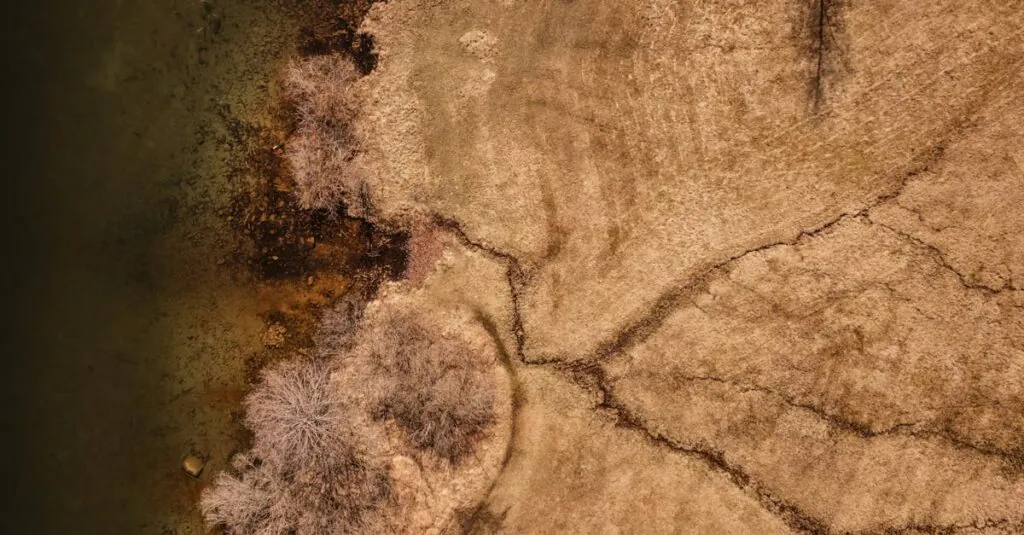Table of Contents
ToggleAccidents happen, and for iPhone 12 users, a splash of water or an unexpected dunk can turn a smartphone into a soggy mess. While it might feel like the end of the world, fear not—drying out your device doesn’t have to be a disaster movie. With a little know-how and a pinch of patience, your trusty companion can be saved from the brink of tech tragedy.
Understanding The Importance Of Drying Out Your iPhone 12
Water damage poses a significant risk to iPhone 12 devices. Immediate action reduces the likelihood of internal corrosion and component failure. Moisture exposure can create short circuits and damage delicate circuitry. Quick drying methods often prevent costly repairs or the need for replacement.
The iPhone 12 features an IP68 rating, indicating it can resist water up to 6 meters for 30 minutes. Although this may provide some protection, submersion in water or exposure to moisture beyond this limit can lead to serious issues. Users may notice malfunctioning buttons, display issues, or erratic behavior when wet.
Drying out an iPhone 12 effectively minimizes damage. Removing the device from water promptly serves as the first crucial step. Using a soft cloth to wipe down the exterior helps eliminate excess moisture. Allowing it to air dry in a well-ventilated space further enhances the drying process. Avoiding heat sources, such as hair dryers, prevents additional damage from extreme temperatures.
Understanding moisture’s impact on functionality aids in prioritizing drying methods. Implementing steps like placing the phone in a bag of uncooked rice or silica gel packets can absorb lingering moisture. Regularly monitoring the device for signs of water damage helps users determine maintenance needs. Observing warning signs early increases the likelihood of a full recovery.
Immediate Steps To Take After Water Exposure
Taking immediate action is crucial after water exposure to an iPhone 12. Quick responses can greatly minimize damage.
Power Off Your Device
Powering off the device is essential to prevent short circuits. Press and hold the side button until the power off slider appears. Swiping the slider turns off the phone completely. Some users might think keeping it on is safe, but it increases the risk of permanent damage. Removing the battery isn’t possible, so swiftly cutting power reduces further risks.
Remove Accessories And SIM Card
Removing accessories and the SIM card helps protect the device during drying. Take off cases, screen protectors, and any other attachments. This action allows air to circulate more freely around the phone. Next, carefully eject the SIM card using the SIM removal tool, as moisture can accumulate in that area. Ensuring a clean environment around the device aids in effective drying. Leaving the SIM card slot open enhances air circulation, helping to dry the internal components faster.
Effective Drying Techniques For Your iPhone 12
Effective drying techniques can save an iPhone 12 from water damage. Act quickly, and use the right methods to achieve the best results.
Using Rice Or Silica Gel
Placing the iPhone 12 in a container filled with uncooked rice often absorbs moisture effectively. Rice has natural moisture-absorbing properties, making it a popular choice. Silica gel packets, however, offer greater moisture absorption capacity. Users can surround their device with these packets for optimal results. Ensure that the phone is completely submerged in rice or surrounded by silica gel to maximize moisture removal. Typically, leaving the device in either medium for 24 to 48 hours yields the best outcome.
Air Drying Method
Opting for the air drying method helps promote natural drying. First, position the iPhone 12 in a well-ventilated area away from direct sunlight. Elevating the device, such as placing it at an angle, encourages gravity to assist in moisture removal. Gentle shaking can help dislodge trapped water within crevices, but avoid excessive force to prevent damage. Ideally, leave the phone to air dry for at least 48 hours. Regularly check the device for signs of remaining moisture during this time.
What To Avoid When Drying Your iPhone 12
Certain practices can worsen water damage during drying. Awareness of potential pitfalls can help protect the device.
Using Heat Sources
Using heat sources like hair dryers or radiators can damage internal components. Excessive heat warps delicate parts and affects adhesives. Devices may encounter issues with screens or sensors if subjected to high temperatures. Instead, opting for air drying in a well-ventilated area proves more effective. Allowing natural airflow promotes gradual moisture evaporation without risking harm. It’s crucial to keep the iPhone away from direct sunlight, as this too can lead to overheating and further complications.
Shaking Or Tapping The Device
Shaking or tapping the iPhone 12 may seem helpful, but it can push water deeper into the device. Internal components can become dislodged or damaged from excessive force. Applying gentle movements might dislodge some trapped water, yet care must be taken to avoid causing more harm. It’s essential to prioritize gradual drying methods over forceful actions. Instead of shaking, users should focus on positioning the device correctly for optimal air circulation. Taking a calm approach aids in ensuring the phone dries out properly without introducing additional risks.
When To Seek Professional Help
Water damage can lead to significant issues that homemade solutions can’t fix. If immediate drying methods fail, consider professional assistance. Signs of internal damage might include malfunctioning buttons or unresponsive displays. Strange sounds during operation may indicate deeper issues in the phone’s circuitry.
Consulting a technician is essential if the iPhone 12 continues to show signs of damage even after drying. Corrosion inside the device can occur, affecting performance. Technicians possess the expertise and tools to assess the extent of the damage accurately. They can perform necessary repairs or replacements for vital components like the battery or screen.
Seek help from professionals when the phone exhibits persistent symptoms of water damage. Unusual behavior, such as rapid battery drainage or overheating, signals a need for expert intervention. It’s vital to act quickly; delaying repairs can worsen the damage and increase repair costs.
Utilizing certified repair centers ensures quality service and reliable repairs. Many technicians offer diagnostic services to determine the scope of the damage without significant upfront costs. Relying on professionals provides peace of mind, especially when facing potential long-term impacts on the device’s longevity and functionality.
Always remember that avoiding DIY repairs in these situations protects the phone. Professional help can prevent further complications and restore the device to optimal condition, allowing for continued use without worry.
Taking swift action after water exposure is vital for iPhone 12 users. By following the recommended drying techniques and avoiding heat sources, the chances of recovery significantly improve. It’s essential to monitor the device for any signs of damage and to seek professional help if issues persist.
With the right approach and a bit of patience, users can restore their iPhone 12 and continue enjoying its features. Remember that prevention is key; being cautious around water can save time and stress in the future.







